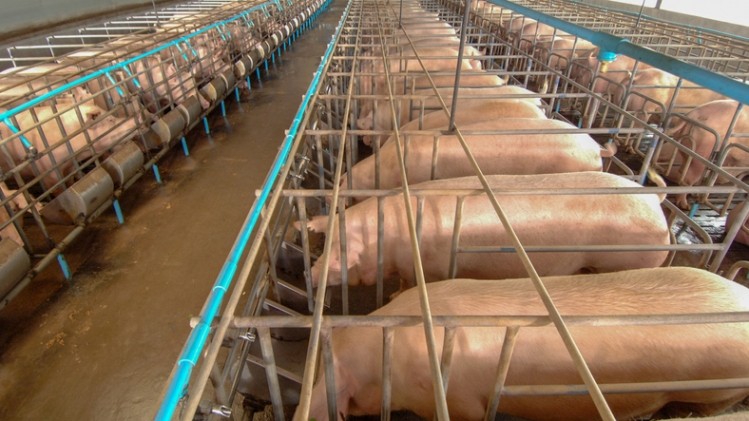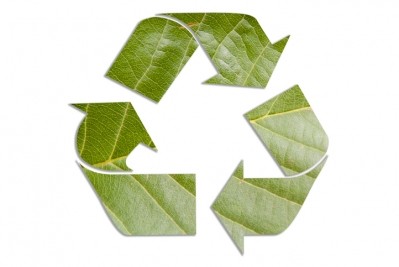Special Edition: Pig and Poultry Gut Health
Blended feed additive sees microbial revamp

Purina Animal Nutrition has added a new, proprietary blend of Bacillus strains to a set of blended feed additives intended to support or improve digestion, average daily gain, feed efficiency and aid manure management, said Emily Otto-Tice, senior nutritionist with Purina Animal Nutrition.
The blend of microbials was developed through work with PMI Nutrition, she told us. Both companies are part of Land O’Lakes.
The direct fed microbials in the product line are intended to work both inside the pig and in the producer’s manure containment system, she said. “Because they’re working in the pig gut and you get more efficiency and digestibility – the fecal matter washes [away] and dissolves with less water,” she added.
“The blend of Bacillus is also promoting good gut health,” she said. “They’re helping with the digestion process.”
Initial interest in developing the feed additives started as amino acid products became more commercially available, she said. The change allowed for the reformulation in swine rations and more focus on reducing levels of nutrients and amino acids being excreted.
Feed additive research and use
The additives, called EcoCare, are intended to be mixed in with a swine ration, said Otto-Tice. They can be used at any stage of production, but the focus has been on work with pigs in the grow-finisher stage.
In a series of research trials, use of the additive in swine feed was found to reduce ammonia emissions by 40%, the company reported.
The amount of nitrogen excreted was lowered by 28% and there was a reduction in manure generated when the additives were used in addition to a diet with dried distillers grains with solubles (DDGS).
Currently, the company is exploring ways of targeting product usage so that it could be applied in shorter time periods, but the results are pending, said Otto-Tice.
“By having it in the feed the pig is doing work for you,” she said. “With our product, you put it in the feed and we have research that has shown 1 to 2% [improvement] in feed efficiency or average daily gain.”
However, she added that the results have not always been consistent as sometimes the improvement has been lower.
A meta-analysis that examined results from 13 studies reported a 1% improvement for average daily gain, she said. However, in individual trials, there were feed efficiency improvements of up to 5% with about half of the studies showing 1-2% improvement in feed efficiency.
In the most recent finishing feed study conducted both at the company’s research farm and at off-site wean-to-finish barns in Iowa there was a 2.3 to 3.6% improvement in feed efficiency, she said.
The most benefit has been seen when producers were using about 20% DDGS in the diet, said Otto-Tice. Adding, “We definitely see the increase in feed efficiency and average daily gain – we think it’s because they’re [the additives are] helping to improve the digestibility in the gut.”
Focus on additive elements
However, the non-medicated additives were designed to work in multiple ways, Otto-Tice said. The blended additives include a selection of direct-fed microbials and phytase and some work has been done with an additive derived from hot peppers.
The hot pepper or capsicum extract has been linked to increased digestion in swine, she said.
In addition to working inside the pig, the microbial element in the supplement was designed to reduce ammonia emissions and help trap nitrogen present in swine waste and convert it to a form that is easier for corn plants to absorb if the manure is used as a crop fertilizer, she said. “It increased the nutrient value of manure and [made it] more comparable to chemical fertilizers,” she added.
“We incorporated phytase into the program so during diet formulation you decrease the use of phytate salt or inorganic rock phosphorus,” Otto-Tice said. “By adding a phytase enzyme that breaks down and releases the naturally occurring the phosphorus in the grain because the pigs do not produce that enzyme naturally in the gut.”
The revamped blend of direct-fed microbials is comprised of several strains of Bacillus, she said. When they reach the manure, the microbes are intended to improve the breakdown of organic matter including starch and fiber.
The increased degradation changes the viscosity of the stored manure and is designed to make it denser, more consistent and easier to remove from a holding location, she said. “We have studies that show when you use the product you can gain back about 20-25% [in manure storage space] because the microbes break up the fibrous component and you don’t have the [separation].”
















